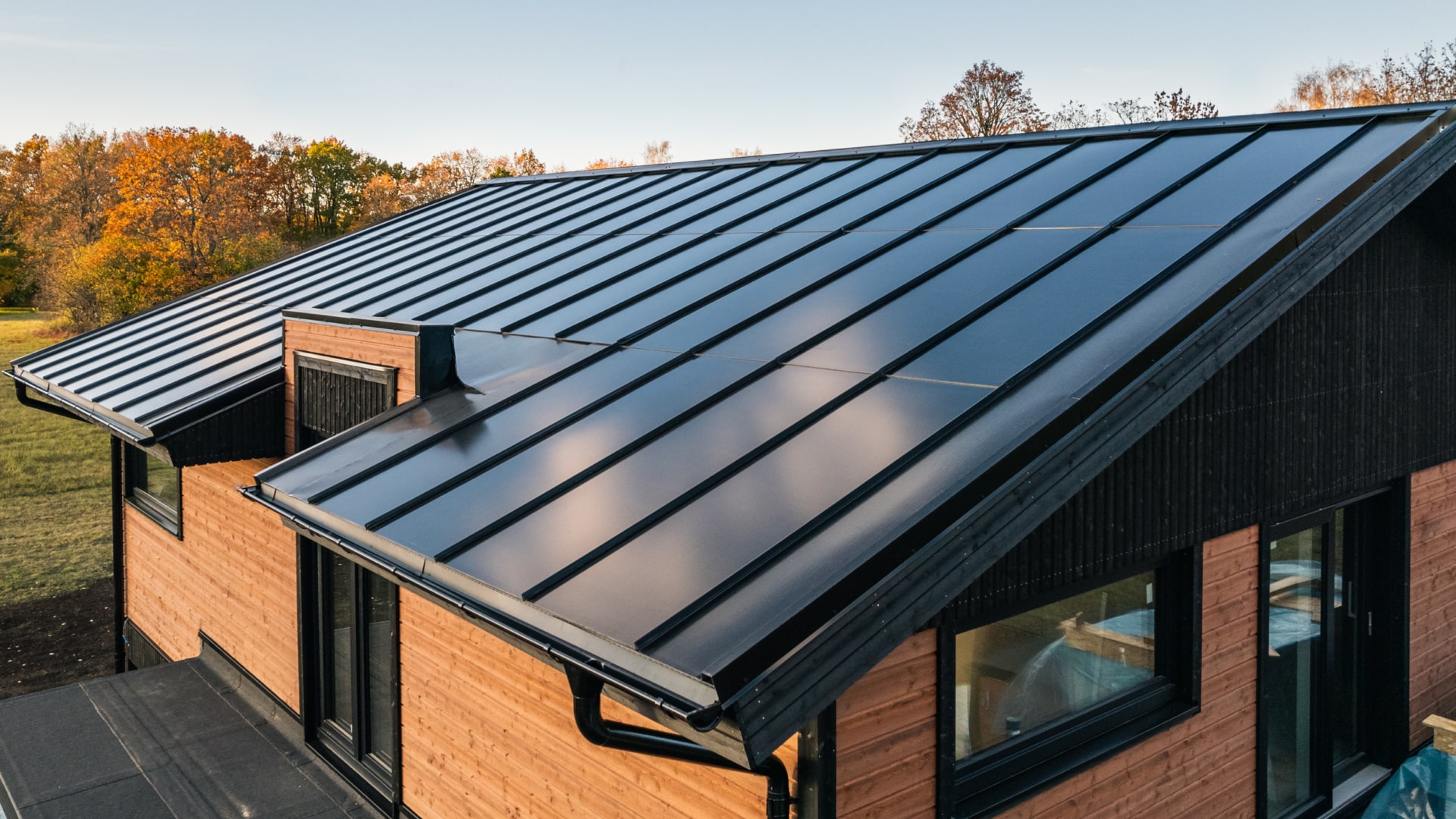
In recent years, solar power systems have become increasingly popular due to their many benefits. They harness the power of the sun to produce clean, renewable energy that can power entire cities, not to mention homes and businesses. If you are interested in learning more about solar power systems, planning to go solar for your home, and powering your business with a smart solar system, this guide is for you.
By the time you finish reading this article, you will know everything there is to know, including:
- Solar energy in numbers
- What are solar power systems?
- What are the types of solar power systems?
- How solar systems work
- The components of a solar power system
- How to choose a solar power system
- EU and US solar initiatives and regulations to consider
- Maintaining a solar power system – troubleshooting and repairs
- How to maximise the benefits of solar power systems
- Roofit.Solar’s smart solar roof solutions
Let’s start with solar energy in numbers and then move on to solar power systems.
Solar energy in numbers
In summer 2023, the world experienced extreme temperatures and wildfires, which served as warnings of the ongoing global climate change. That is why there is an urgent need to adopt new and renewable sources of clean energy and change the overall energy strategy at a national level.
However, on a positive note, more people and companies worldwide are transitioning to cleaner energy options like wind and solar!
According to the S&P Global Top 10 Cleantech Trends in 2022 report:
- Cost declines due to technology evolution have triggered new investments in renewable energy.
- Regarding solar energy, investors and governments expect continuously lower capital investment.
In Europe, the production and consumption of solar energy are promising.
- In 2022, the installation of solar panels in the EU reached a record high of 41.4 GW, which is 47% higher than the previous year.
- Germany, Spain, Poland, Netherlands, and France are the top five solar markets in Europe, while Portugal and Sweden are newcomers, ranking third and tenth, respectively.
- The EU’s solar power generation fleet also witnessed a significant increase of 25%, from 167.5 GW in 2021 to 208.9 GW in 2022.
- In terms of solar power per capita, the Netherlands is the leading country, followed by Germany and Denmark. Moreover, Greece, Romania, Estonia, Portugal, and Belgium are the top five countries that produced the highest share of electricity from solar during the summer of 2022, setting new records.
Now that we have a better understanding of the solar trends, it’s time to start your solar journey – what is a solar power system, and how does it work?
Definition: What are solar power systems?
As the world continues to move towards more sustainable forms of energy, solar power has emerged as a viable alternative to traditional fossil fuels. Today, more and more homes and businesses are being covered with solar solutions.
In a nutshell, a solar power system is a collection of solar panels that are connected to an inverter and a battery bank. Then, what is a ‘solar panel’?

A solar panel is a device that collects sunlight and converts it into usable electricity. Typically, solar panels consist of silicon solar cells, wiring, a metal frame, and a protective glass cover.
What is a solar roof?
As an 2-in-1 integrated solution, solar roofs have become increasingly popular in recent years. They involve the installation of solar panels onto the roof of a building to generate electricity from the sun’s energy. In a nutshell, a solar roof is a specific type of solar power system that utilizes the roof of a building as a location to install solar panels for electricity generation.
Solar roofs and solar panels both have their own advantages and disadvantages. However, solar roofs have some unique benefits that distinguish them from traditional solar panel systems:
- Aesthetics: Solar roofs are designed to blend in with the overall look of a building, making them a more aesthetically pleasing option than traditional solar panels that can sometimes appear bulky and obtrusive. That’s what we pride ourselves in at Roofit.Solar!
- Increased energy efficiency: Since solar roofs are integrated into the building’s structure, in most cases, they can provide better insulation and can help regulate the temperature inside the building, leading to increased energy efficiency and lower energy bills.
- Durability: Solar roofs are made of high-quality materials and are designed to withstand harsh weather conditions, making them a more durable option.
- Maintenance: Solar roofs require less maintenance than traditional solar panels since they are designed to protect the roof from weather damage, reducing the need for frequent cleaning and repairs.
- Home value: Solar roofs can increase the overall value of a property due to their energy efficiency and aesthetic appeal, making them a wise investment for homeowners. Find out more here: “The Million-Dollar question: Does solar increase home value?“
However, solar roofs may also be more expensive than traditional solar panels, as they offer an integrated solution. It’s always recommended to consult with a professional to determine the best solar solution for your specific needs and budget!
How do solar PV systems work?
Let’s start with the basics. A solar PV system is a power system that convert sunlight into electricity by using the photovoltaic effect.
A solar power system, specifically a solar photovoltaic (PV) system, works by converting sunlight into electricity. Here is a basic overview of how it works:
- Solar panels: The system starts with the solar panels, which are typically installed on a roof or on a ground-mounted frame. The panels are made up of solar cells, which are made of silicon and other materials.
- Sunlight: When sunlight hits the solar cells, it creates an electrical field across the layers, generating direct current (DC) electricity.
- Inverter: The DC electricity produced by the solar panels is then sent to an inverter, which converts it into alternating current (AC) electricity that can be used in your home or fed back into the grid.
- Electrical panel: The AC electricity from the inverter is sent to your home’s electrical panel, where it can power your appliances and electronics.
- Grid connection: If your solar system generates more electricity than your home uses, the excess can be fed back into the grid. You may be credited for this excess electricity through a process called net metering, which varies by location
In short, solar panels convert the energy from the sun into direct current (DC) electricity, which is then converted into alternating current (AC) electricity by the inverter. The next step in the process is that the AC electricity is sent to the home or business to power appliances and electronics.
But what happens to excess energy that is not conceded?
Any excess electricity generated by the solar panels is stored in the battery bank for later use.
Want to learn more about solar batteries, their types, and how they work? Take a look here to get the answers!
In conslusion, solar power systems work by harnessing the energy of the sun to generate electricity. These systems typically consist of several components, including solar panels, an inverter, a battery bank, and a charge controller.
The components of a solar system
Here’s a breakdown of how each component works together in a solar power system:
Solar panels: Solar panels are made up of photovoltaic (PV) cells, which convert sunlight into direct current (DC) electricity.
To understand what a PV does, let’s look at what a PV system is.
A solar PV system is an energy system that converts sunlight into electricity by using the photovoltaic effect. When sunlight hits the solar panels, the PV cells inside the panels generate an electric current. The more sunlight that hits the panels, the more electricity they can produce, and the lower your energy bills will be.
Solar Battery: Simply put, solar batteries exist because sometimes you can’t use all the solar energy produced by your rooftop panels right away. Any excess electricity generated by the solar panels that is not used immediately is stored in a battery bank for later use.
This ensures that, as a solar rooftop owner, you do not always need the sun to produce solar energy. Thanks to solar batteries, the solar power system can continue to generate electricity even when the sun is not shining.
Plus, the solar battery bank also helps to smooth out any fluctuations in electricity production that may occur due to changes in sunlight levels or other factors.
Inverter: A solar inverter is one of the most important elements of a solar power system. As mentioned above, when solar panels produce direct current (DC) electricity, an inverter comes into play so that the building can use the energy produced.
The inverter converts the DC electricity into alternating current (AC). This allows the electricity to be fed into your home or business to power your appliances. As most electrical appliances and devices use AC electricity, the inverter is a key component of the solar power system.
To find out more about what an inverter is and how it works, read our article “Solar inverters explained”.
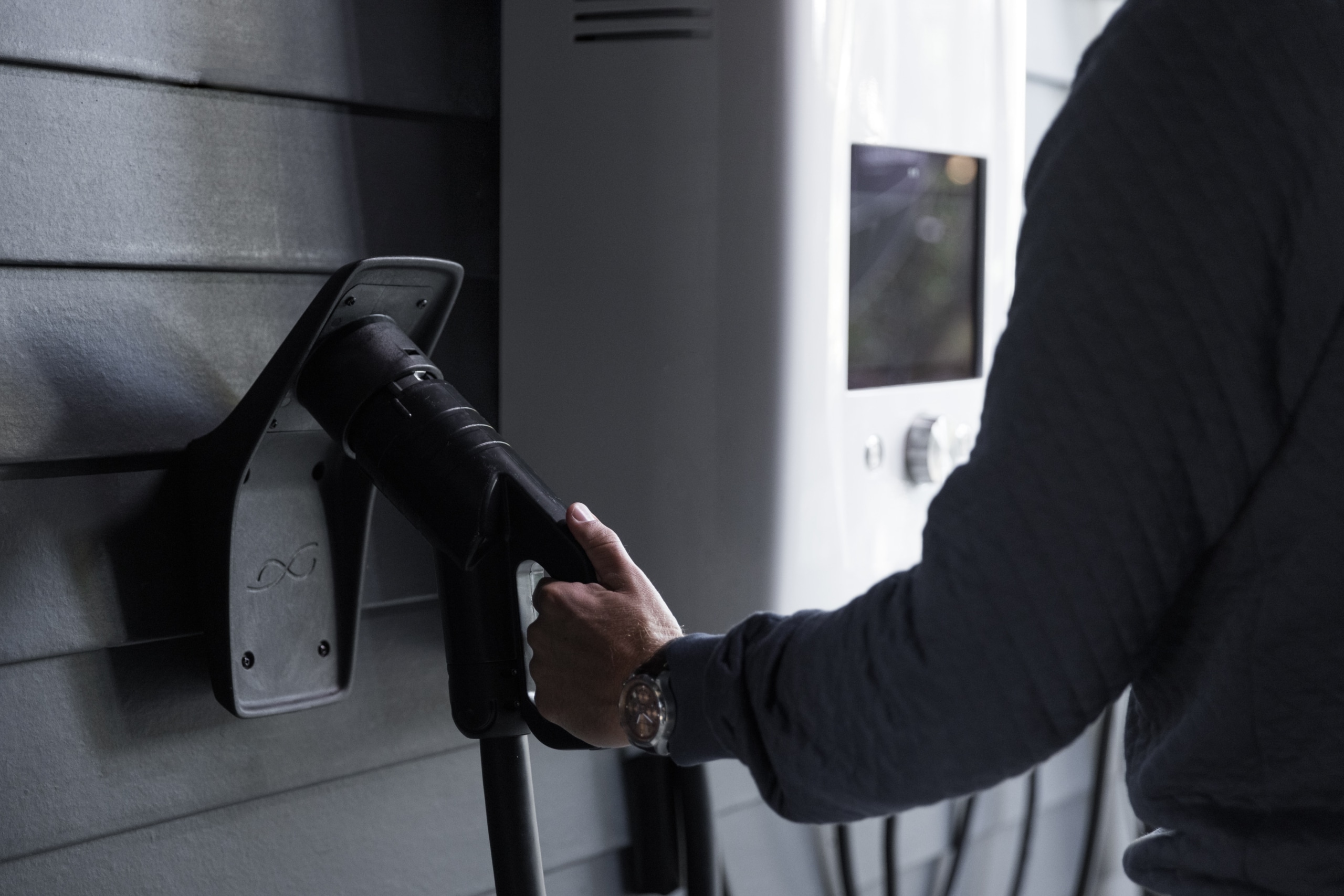
Charge Controller: The charge controller regulates the flow of electricity between the solar panels and the battery bank to ensure that the batteries are properly charged and do not become overcharged or damaged.
Now that we have a better understanding of the components of a solar power system, let’s jump into the types and their features.
What are the types of solar power systems?
There are several types of solar power systems, each with their own unique features and benefits.

In this section, we will list the most common types of solar power systems.
- Grid-tied solar power system
- Off-grid solar power system
- Hybrid solar power system
- Community solar power system
- Concentrated solar power system
Grid-tied solar power system
On-grid – or in other words “grid-tied” – solar systems are considered to be the most common type of residential solar systems worldwide. A grid-tied solar power system is connected to the utility grid, allowing any excess electricity generated by the solar panels to be sold back to the utility company.
What makes it popular is that this system allows homeowners to potentially earn money by generating excess electricity and selling it back to the grid.
On-grid systems require three main components:
- solar panels
- a power meter
- an inverter
Want to learn more about solar inverters before moving on? Read our post “Solar Invertors Explained” and learn all about inverters.
The advantages of grid-tied solar systems are that they are simpler to install and cheaper than other options. They also do not require a battery.
The disadvantages are that this system requires a grid connection and does not work in rural areas.
Off-grid solar power system
An off-grid solar power system is not connected to the utility grid. Instead, it relies on batteries to store excess electricity generated by the solar panels for later use. Unlike on-grid systems, off-grid residential solar solutions are preferred by house owners living in rural areas.
Off-grid solar systems work with three main components:
- solar panels
- an invertor
- battery systems
If you want to learn more about solar batteries, take a look at our article “Everything You Need to Know about Solar Batteries”.
Off-grid solar power systems offer homeowners in rural areas the opportunity to go solar and be 100% self-sufficient.
However, it is expensive compared to the other options and requires a large capacity battery array.
Hybrid solar power system
For those looking for a more flexible system, a hybrid solar system may be the answer.
A hybrid solar power system combines both grid-tied and off-grid components. It allows for greater flexibility and control over electricity generation and use. This type of system can also provide backup power in case of a grid failure.
You can learn more about grid-tied, off-grid, and hybrid systems in our article “Types of Residential Solar Energy Systems”.
Community solar power system
A community solar power system is a shared solar installation that allows multiple households or businesses to benefit from the electricity produced by the system.
This option is particularly suitable for those who are unable to install solar panels on their property, such as renters or individuals residing in multi-unit buildings.
Concentrated solar power system
Not looking for a home solar system but a large-scale commercial installation? Then you’ve come to the right section.
A concentrated solar power system, typically used in large-scale commercial installations, basically uses mirrors or lenses to concentrate sunlight onto a small area. This creates heat that can be used to turn a turbine and generate electricity.
The solar power systems we listed above are some examples of the different types of solar power systems that are available.
The right system for you will depend on your specific needs and circumstances, such as your energy consumption, the location of your home or business, the angle of your roof, your budget, and, last but not least, expectations.

The Million-Dollar Question: Does solar increase home value?
This is one of the top questions asked by those wanting to go solar. Let’s start with how the situation is in Europe.
Bank of America data reveals that energy bills in Europe are increasing, with an average increase of 54% over the past two years. The energy crisis in the EU has led to a surge in demand for solar energy, making 2022 the best year in solar history for the EU with an increase of 41.4 GW compared to the previous year.
The rise in solar energy adoption is not just due to increased property value, but also to the need for a reliable energy source amid the energy and climate crises in the region. Solar is seen as a lifeline and the fastest-growing energy source available.
The REPowerEU plan aims to increase the use of renewable energy sources to 45% of the EU’s total energy supply by 2030. This plan will not only help reduce dependence on imported fossil fuels but also contribute to protecting the environment. Given the current situation, the rise of solar energy adoption is expected to continue for both economic and environmental reasons.
How is the situation in the US and UK?
Using solar energy systems can increase the value of a home, as buyers across the US are willing to pay a premium of around $15,000 for a home with an average-sized solar array, according to the US Office of Energy Efficiency and Renewable Energy. In addition, research shows that each 1 kilowatt (kW) of solar installed can increase the resale value of a home by an average of $5,911 in the US.
In the UK, properties with solar panels have seen an average increase in sale price of 14%, with the highest increase in value seen in London at £90,000, followed by Bristol, Edinburgh, and Leicester. This increase in value is attributed to the ability to save on energy bills, particularly as they have increased by 37% on average during lockdown, and the ability to sell energy back to the grid.
Overall, solar energy systems can bring economic benefits to homeowners by increasing the value of their property and helping to save on energy bills, making it an increasingly attractive option for property owners in Europe, the UK, and US.
To learn more about if the solar increases the value of buildings, take a look at here!
How to choose a solar power system
Once you’ve gained an understanding of residential and commercial solar systems and are ready to start your solar journey, there are a few things you should consider before making any decisions.
The first step is to investigate the energy efficiency of your home or business.
- Can you upgrade your home’s efficiency?
- What is your total electricity usage?
These are important questions to answer before switching to solar energy as low-cost efficiency measures could help reduce your energy consumption.
Once you’ve decided to go solar, here are some steps to follow.
First, you need to assess your home’s solar potential to determine how much power you can generate at your specific location. Keep in mind that not every home will be suitable for solar due to factors like geography, climate, and roof design.
To determine if your roof is suitable for a home solar system, there are several factors to consider including roof orientation and slope, available roof space, roof age, and shading.
Orientation and Slope
When assessing a roof, orientation is a crucial factor.
Ideally, the roof should face the sun, and there should be no major obstructions causing constant shade.
An angle of 20 to 40 degrees
If your roof faces south and has a tilt angle of 20 to 40 degrees, your home will be a good fit for solar as this will maximise the amount of sunlight.
In the northern part of the world, an ideal roof would face east-south-west.
A minimum pitch of 10 degrees
If you are considering Roofit.Solar for your home, then a minimum pitch of 10 degrees is required for both waterproofing and maintenance.
Side note, our solar roofs can also be installed on building facades!
Deciding on a solar roof solution is hard, but we make it simple. If you want to get assistance with the assessment of your home or business, get a quote today!
Space
A 30-m2 roof is a suitable starting point. Smaller roofs may require a tailored plan.
Roof
The age and condition of the roof are the other important factors. If you have an old roof and are planning to install a new one, going with a solar roof will be a good option.
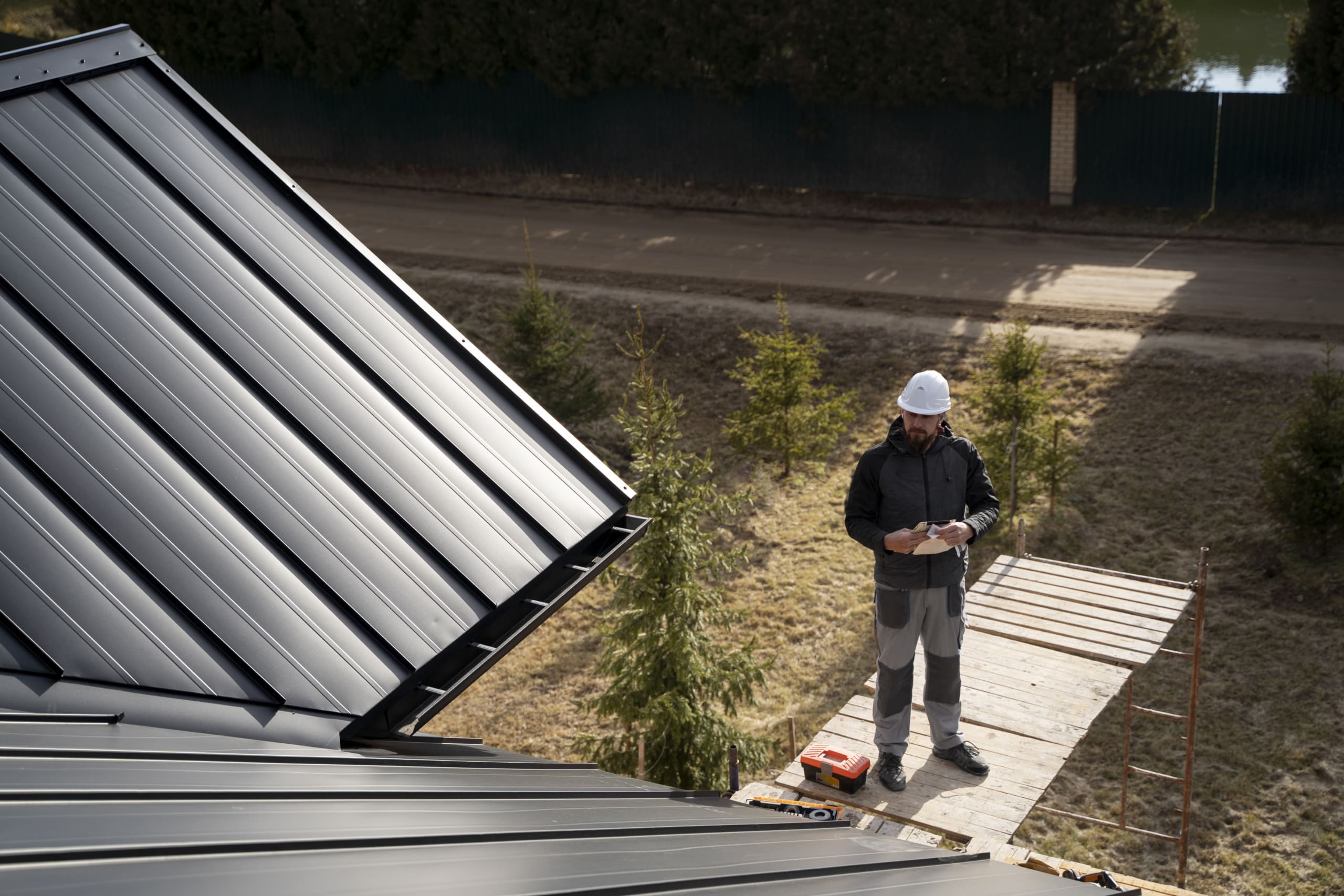
Shading
When assessing a solar roof, it’s important to take into account any potential sources of shading, such as trees or nearby buildings. They may reduce the amount of sunlight received.
Local regulations
In addition to these points, we also recommend that you check any local zoning or building regulations that may affect the installation of a solar energy system on your roof!
Different countries offer different incentives to those who invest in solar rooftop systems or other solar systems. Be sure to stay informed about updates and regulations on solar energy in your area and country, so you can not only reduce your electricity bills but also fully benefit from the incentives.
Speaking of permits and regulations to consider, let’s take a look at global solar initiatives and regulations to consider.
EU and US solar initiatives and regulations to consider
The popularity of solar energy has been increasing worldwide, and so has the number of initiatives offered. In this section, we will discuss global solar initiatives, from the EU to the US, and regulations to consider.
The EU initiatives
Solar energy is experiencing the fastest growth among all energy sources in the EU. Did you know that, in 2020, the EU solar market expanded by 18 GW, and solar energy accounted for 5.2% of the EU’s total electricity production?
One of the reasons why solar has become a cost-effective form of electricity in the EU is that the costs have fallen by 82% in the last decade.
So what are the EU’s initiatives for green energy in general?
The European Green Deal and the REPowerEU plan have made solar energy a fundamental element of the EU’s shift toward clean energy.
The European Green Deal is a plan set by the European Commission to make Europe climate-neutral by 2050. The plan includes initiatives to reduce greenhouse gas emissions, improve energy efficiency, and promote renewable energy sources like solar power.
The REPowerEU plan is a part of the European Green Deal. It aims to increase the share of renewable energy in Europe’s total energy consumption to 32% by 2030. The plan includes measures to support the deployment of renewable energy, such as solar, and reduce the EU’s dependence on imported fossil fuels.

The EU solar energy strategy proposes 3 initiatives:
- The European Solar Rooftops Initiative proposes gradually introducing an obligation to install solar energy in different types of buildings to utilize rooftops’ potential for clean energy.
- The EU Large-scale Skills Partnership aims to address workforce bottlenecks and promote the development of skilled workers in the solar energy sector.
- The newly launched EU Solar PV Industry Alliance aims to support the EU’s Solar Energy Strategy, diversify supply chains, retain value in Europe, reduce supply risk, and achieve 30 GW of committed European manufacturing capacity by 2025, which could create over 400,000 new jobs and €60 billion of new GDP per year.
To illustrate the solar initiatives across Europe, let’s take a look at Germany and Estonia.
Germany approved a number of tax benefits for small photovoltaic (PV) systems in a move expected to spur the deployment of solar energy on the roofs of residential and commercial buildings across the country as of 2023.
- The exemption for solar plants on multi-family and mixed-use buildings is limited to 15 kW per unit, but up to 100 kW per taxpayer.
- Since January 1, 2023, no sales tax is charged on the installation of photovoltaic systems on or near residential buildings, including all components such as modules, inverters, and solar power storage.
The exemption applies even if the solar system was ordered in 2022 but delivered or installed after December 31, 2022, for new components purchased and installed. However, it does not apply retroactively to existing systems. The zero tax rate also extends to “balcony power plants” but not to mobile solar modules intended for camping.
This VAT exemption eliminates the need for operators to comply with the “Regulation for Small Business Entrepreneurs” in order to receive reimbursement.
In Estonia, Kredex is a state-owned financial institution that aims to improve the availability of financing, support entrepreneurship, and promote exports. It offers grants for small residential reconstruction to support the adoption of green energy.
Another initiative in Estonia is that, since 2022, solar owners are no longer required to pay income tax on the excess electricity generated by solar parks with a capacity of up to 15 kW.
The US initiatives
As in the EU, the use of green energy in the US has been growing and supported.
According to recent news, developers aim to add 29.1 GW of solar generating capacity to the U.S. grid in 2023, accounting for 54% of planned new capacity for the year, the U.S. Energy Information Administration announced in February 2023.
Solar incentives are nothing new in the US. Since 2006, the Solar Investment Tax Credit has offered tax reduction incentives for homeowners who choose to “go solar.” In 2022, embracing residential solar systems became even more appealing when the Federal Government signed the Inflation Reduction Act of 2022 into law.
In short, the Solar Tax Credit offers a way to decrease your income tax while going solar. Home and business owners who buy and install solar photovoltaic (PV) systems in 2022 or before 2033 can claim a federal tax credit worth 30% of the total cost, including installation and fees, during the year of installation.
Regulations to consider
Regulations and restrictions on the installation of solar roofs are one of the things to consider when making the decision to go solar. However, the regulations vary from country to country and region to region. Here are some examples of regulations in the EU and the US:
The EU regulations
Building Codes( (Regulations): These dictate the type of materials, installation procedures, and structural requirements for roofing systems in general, including solar roofs.
Grid Connection: Any solar roof installation must be connected to the national electricity grid, and the connection must meet specific requirements set by the local energy provider.
Feed-In Tariffs: Many EU countries offer feed-in tariffs to incentivise the production of solar energy. Side note, the rules for solar installation incentives vary.
Permits: Most of the EU countries require permits for rooftop solar installations. This involves submitting an application, paying a fee, and providing detailed information about the installation.
US Regulations and Limitations:
Building Codes: The US has different building codes for each state that dictate the type of materials, installation procedures, and structural requirements for all roofing systems, including solar roofs.
Net Metering: Net metering is a billing arrangement that allows solar power system owners to receive credit for the electricity they produce. Similar to the EU, there are different regulations across the country, which vary from state to state.
Permits: Most US states require permits for rooftop solar installations. These include submitting an application, paying a fee, and providing detailed information about the installation.
Tax Credits: Federal and state tax credits are available in the US to encourage the production of solar energy, but the rules for these incentives vary from state to state.
In conclusion, before you install a solar roof, it’s important that you research the local regulations and restrictions in your area to make sure that you are complying with all of the legal requirements.
If you live in Europe and are wondering about the regulations and whether your home or business is a good fit for solar, get in touch with our team and learn more about the solar incentives and regulations in your area.
Maintaining a solar power system - troubleshooting and repairs
If you have read this far, you already know that solar energy is becoming increasingly popular worldwide, with more and more people installing solar panels in their homes and businesses.
However, just like any other mechanical or electrical system, solar panels, integrated solar roofs, and their components require maintenance to ensure that they continue to operate efficiently, effectively, and safely. Proper maintenance can also help identify and resolve problems before they become major.
Here are some essential tips for maintaining your solar system, troubleshooting, and repairs:
Clean regularly
Solar panels need to be cleaned regularly to remove dirt, dust, and debris that can accumulate on the surface. A dirty solar panel can reduce the amount of energy it can generate, which can affect the overall performance of the system.
Clean your solar panels at least twice a year, and more often if you live in an area with heavy pollution or frequent dust storms.
When it comes to our rooftop solutions, you can find detailed information here regarding cleaning and maintenance. In a nuthshell, foreign objects like dust, industrial emissions, and bird droppings can reduce the power output and cause hot-spot effects on solar panels. The severity depends on the transparency of the objects.
Our team recommends that the PV system is kept clear of obstructions and the frequency of cleaning depends on environmental factors. Rain can clean the glass in many cases, but if cleaning is required, a damp sponge or soft cloth should be used without touching any electrical connections. Note that acidic or alkaline cleaning agents should be avoided!
Check the connections
The connections between the solar panels, inverter, and other components should be checked regularly for signs of wear or corrosion. Any damaged or worn-out components should be replaced immediately to prevent further damage to the system.
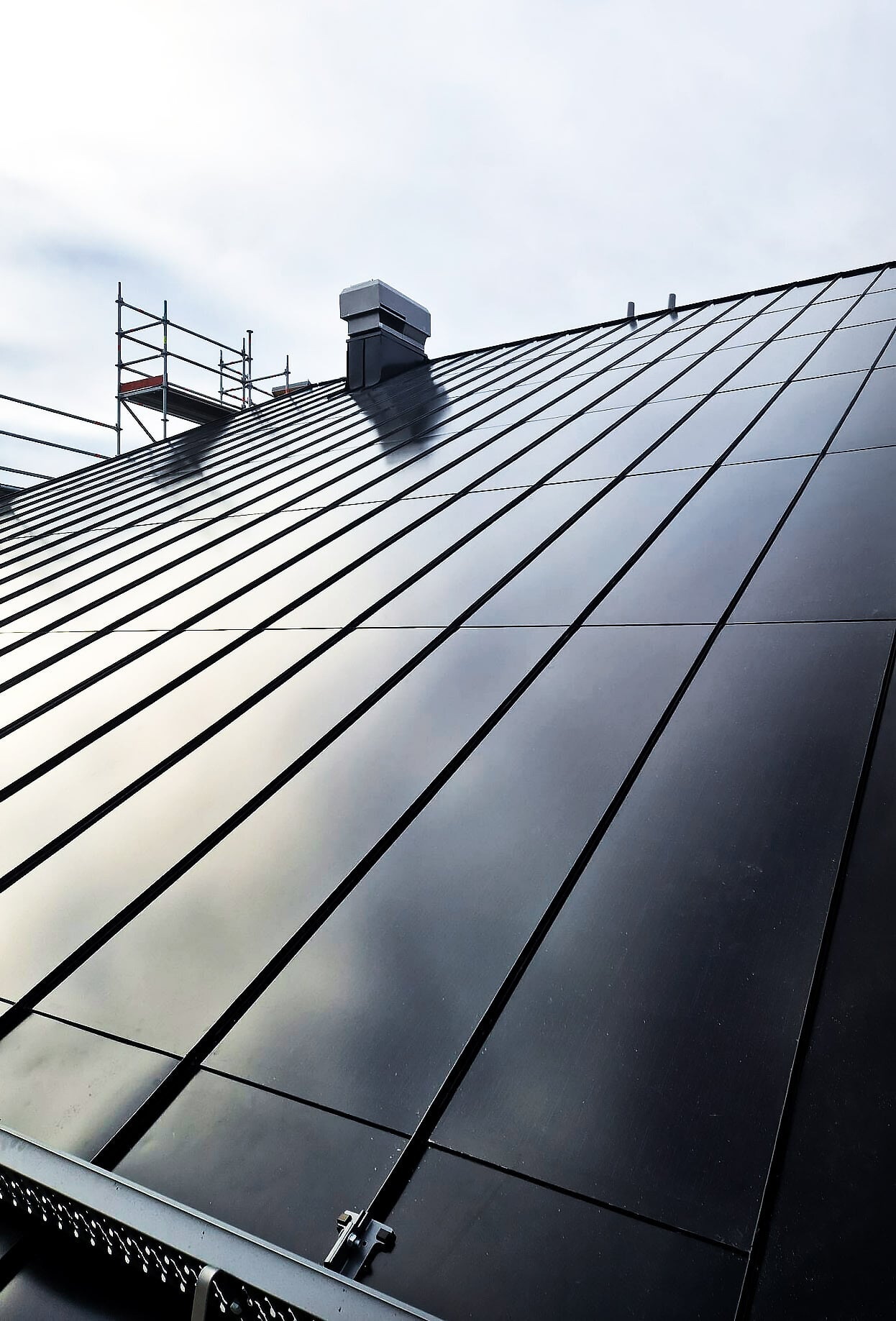
Monitoring performance
Monitoring the performance of your solar system is essential to ensure that it is working properly. You should regularly monitor the system’s output and compare it with the expected output. If you notice a significant drop in performance, this could indicate a problem that needs to be addressed.
Common problems with solar systems include wiring faults, damaged solar panels and faulty inverters. These problems can be resolved by contacting a professional solar panel installation company to inspect and repair the system.
Conduct regular inspections
Regular inspections of the solar panels and other components should be carried out by a qualified technician to identify any potential issues before they become significant problems. A professional inspection can also ensure that the system is working efficiently and effectively.
DIY Maintenance
Some aspects of solar system maintenance can be carried out by homeowners, including cleaning the solar panels, checking the connections, and monitoring performance. However, any major repairs or replacements should be conducted by a professional to avoid damage to the system or injury to the homeowner.
If a component in your solar system needs to be replaced, it’s important to choose high-quality replacement parts from a reputable supplier. Any repairs or replacements should be conducted by a professional solar panel installation company to ensure that the system is repaired correctly.
Maintenance: Solar panels vs solar roofs
The above principles and suggestions apply to all solar roof solutions including solar panels and solar roofs.
Although integrated solar roofs have different installation and maintenance requirements than traditional solar panels, they still require regular maintenance to ensure that they operate efficiently, effectively, and safely.

Starting with the structure, an integrated solar roof combines the solar panels with the roofing material, which can make the maintenance process different. The roofing material needs to be inspected regularly for damage or wear, and any damaged areas should be repaired or replaced as soon as possible to prevent water leaks.
The solar panels themselves should also be regularly inspected and cleaned of any debris or dirt to maintain optimum energy production, as mentioned earlier.
Another important consideration for integrated solar roofs is the electrical wiring, which is typically installed beneath the roofing material. This wiring should be inspected regularly for damage or wear, and any problems should be addressed immediately to prevent electrical fires or other hazards.
Finally, maintaining a solar system requires regular cleaning, monitoring, and inspection to ensure that it is working efficiently and effectively. Homeowners can carry out some aspects of maintenance themselves, but any major repairs or replacements should be conducted by a professional. By following these tips, you can enjoy harnessing the power of the sun effectively and safely for years to come.
How to maximise the benefits of solar power systems
If you want to maximise the benefits of your solar power system, there are a number of steps you need to take to ensure that it is correctly and properly maintained and that you and your family members or colleagues use it efficiently.
Here are six suggestions from the Roofit.Solar team.

Install the right size system
First things first – it goes without saying that the first step to maximising the benefits of a solar system is to install it correctly. This means that the solar system should be appropriately sized for your energy needs.
Here at Roofit.Solar, our team of experts helps you determine the right size system for your home or business based on your energy usage, location, and other factors. Get in touch with us today!
Store excess energy
If your solar power system includes batteries, you can store excess energy generated during the day and use it at night or during periods of low sunlight. This is what solar batteries are made for.
By using solar batteries and storing excess energy, you can further reduce your energy bills and maximise the benefits of your solar energy system.
Carry out proper maintenance
As mentioned in the previous section, proper maintenance is a must for any rooftop solar system.
Proper maintenance of your solar power system can help to increase its efficiency and extend its lifespan. This includes regularly cleaning the solar panels or solar roof, checking the wiring and connections, and replacing any damaged components as necessary.
In general, monitoring the performance of your solar power system can help you identify any problems that may be affecting its efficiency. This can include regularly checking the energy output of your system and monitoring the health of the batteries (if applicable).
Consider net-metering
Net-metering is a system that allows you to sell excess energy generated by your solar power system back to the grid. This can help you offset the cost of your electricity bills and maximise the financial benefits of your solar power system.
Note that net metering is legal and encouraged in many countries and states. However, the specific rules and regulations surrounding net metering can vary by location.
Use energy-efficient appliances and lighting
How can you reduce your overall energy use? By using energy-efficient appliances and lighting.
Energy-efficient appliances and lighting use less energy than traditional models. This means that your solar power system will have more capacity to power your home or business.
Find out more about the financial incentives and benefits
There are various financial incentives worldwide available for homeowners and businesses that install solar power systems. These vary from tax credits to rebates and other incentives that can help offset the upfront cost of installation and maximise the financial benefits of your system over time.
Roofit.Solar’s smart solar roof solutions
Founded in Estonia in 2016, Roofit.Solar is an innovative company specialising in the design and manufacture of exceptional solar roofs.
We are proud to have won several awards since 2016 for our state-of-the-art solar technology, which seamlessly blends Nordic design with functionality! Our fully building-integrated solar roofs offer a unique combination of stunning aesthetics and durability, withstanding even the harshest weather conditions.
One of the key benefits of Roofit.Solar’s solar roofs is their efficient 2-in-1 installation, resulting in an overall building costs. Our solar roofs are also approved for use in historical and heritage buildings, such as the University of Tartu in Estonia, allowing protected structures to harness solar power. The solar cells are integrated into sleek, all-black metal sheets, and are almost invisible from a distance, making them highly effective and visually appealing.
Roofit.Solar today has customers from 17 countries across Europe, amongst others Estonia, Sweden, and Germany as well as Norway, Poland, Austria, Belgium, Switzerland, and the UK.
Roofit.Solar was selected by the World Energy Council and the German Energy Agency as one of the top 15 most promising energy and climate-tech startups of 2023!
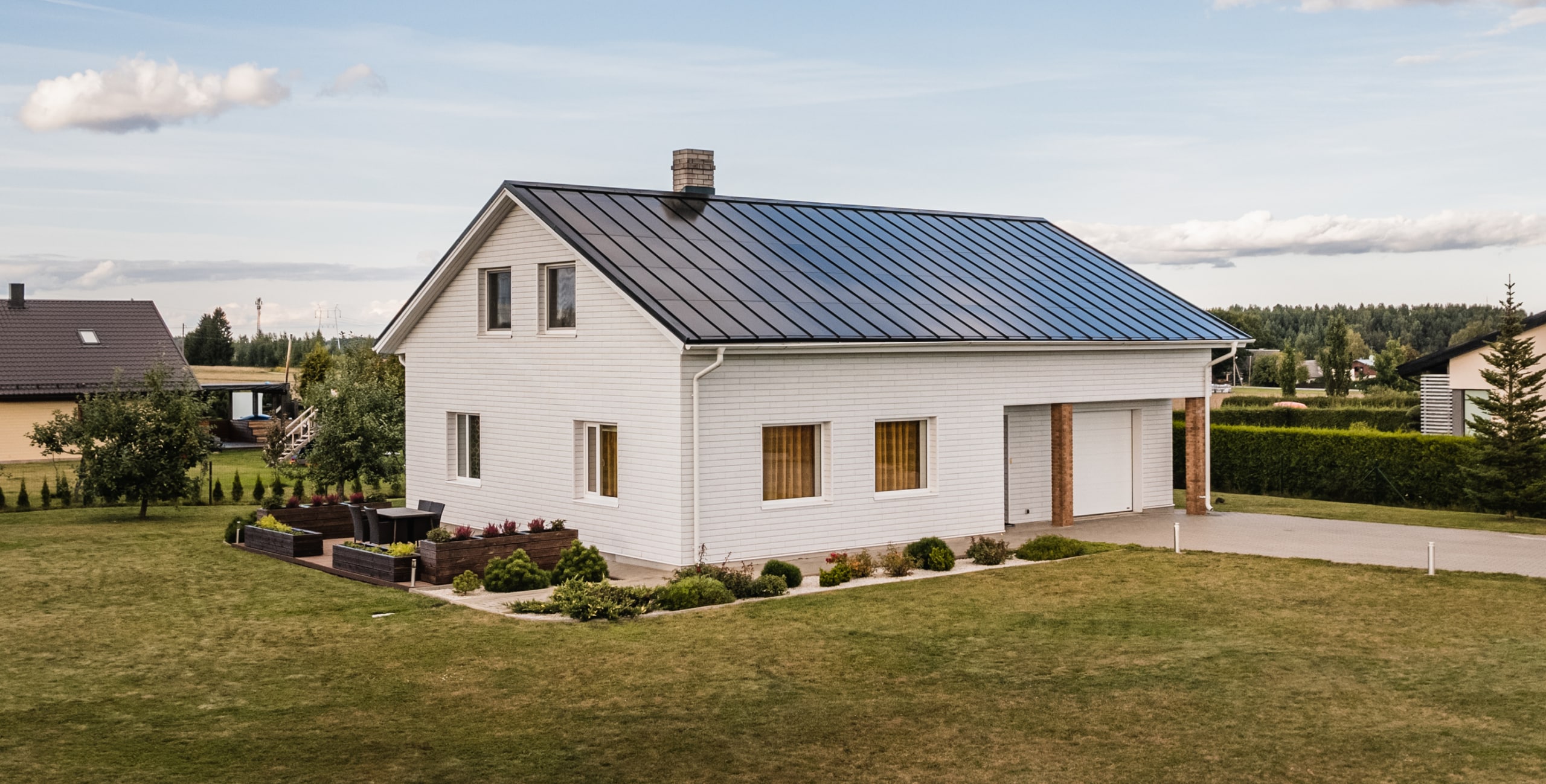
Now it’s time to introduce our smart and beautiful solar roof solutions!
Meet our products
Our solar roof panels are a 2-in-1 building-integrated photovoltaic (BIPV) solution for your roof. The monocrystalline solar cells provide stellar performance even in low-light conditions. They provide an excellent photovoltaic solution for both residential and commercial properties with sloped roofs that have a minimum pitch of 10 degrees.
Currently, we offer 3 different types of solar roofs each with different seaming, weight, and rated power. You can learn more about our solar power systems here!
- Double Seam Solar Roof Panels
- Double Seam 2023 Solar Roof Panels
- Click Solar Solar Roof Panels
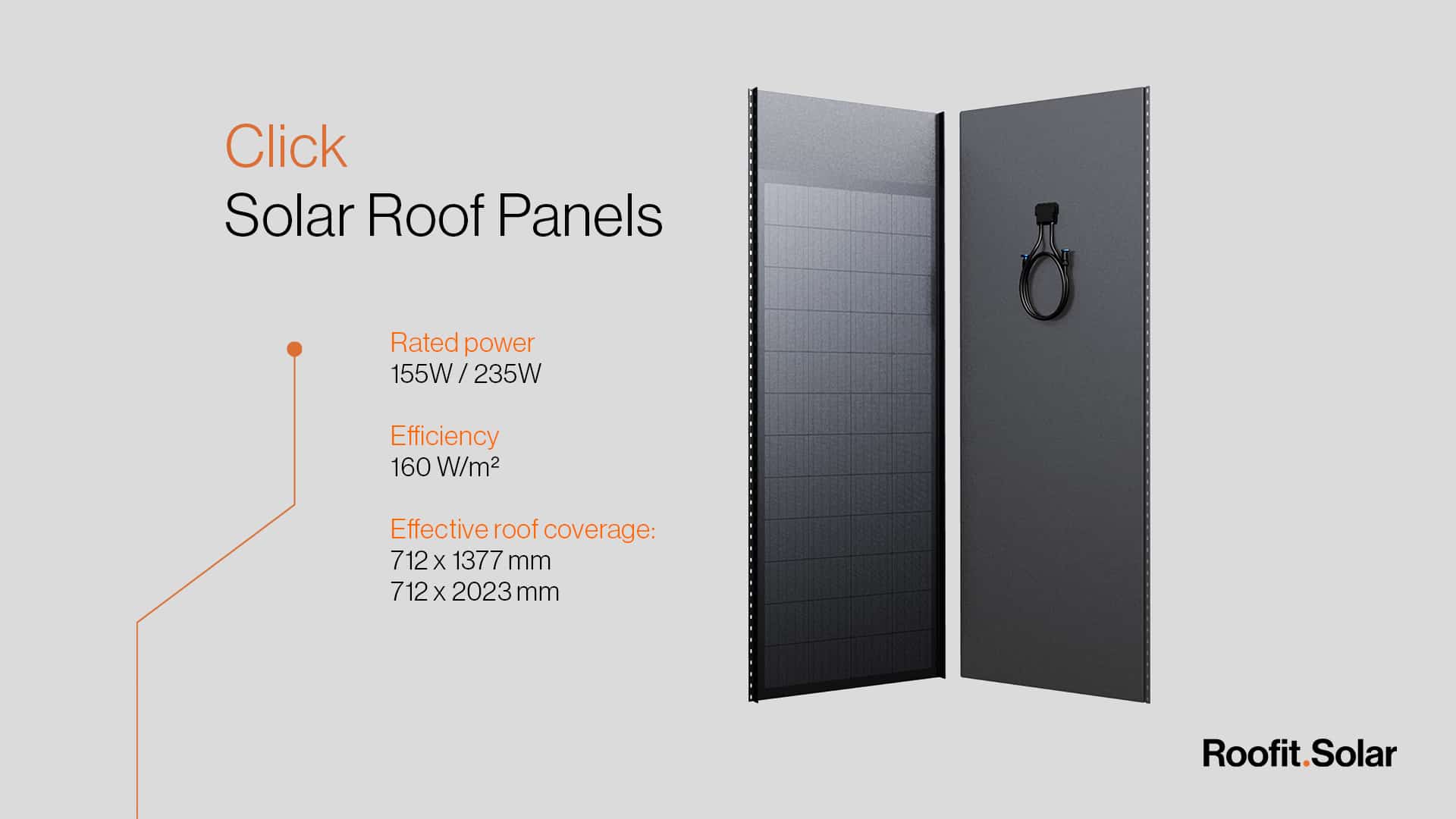
Interested in learning more about our solar power systems? Have a look here!
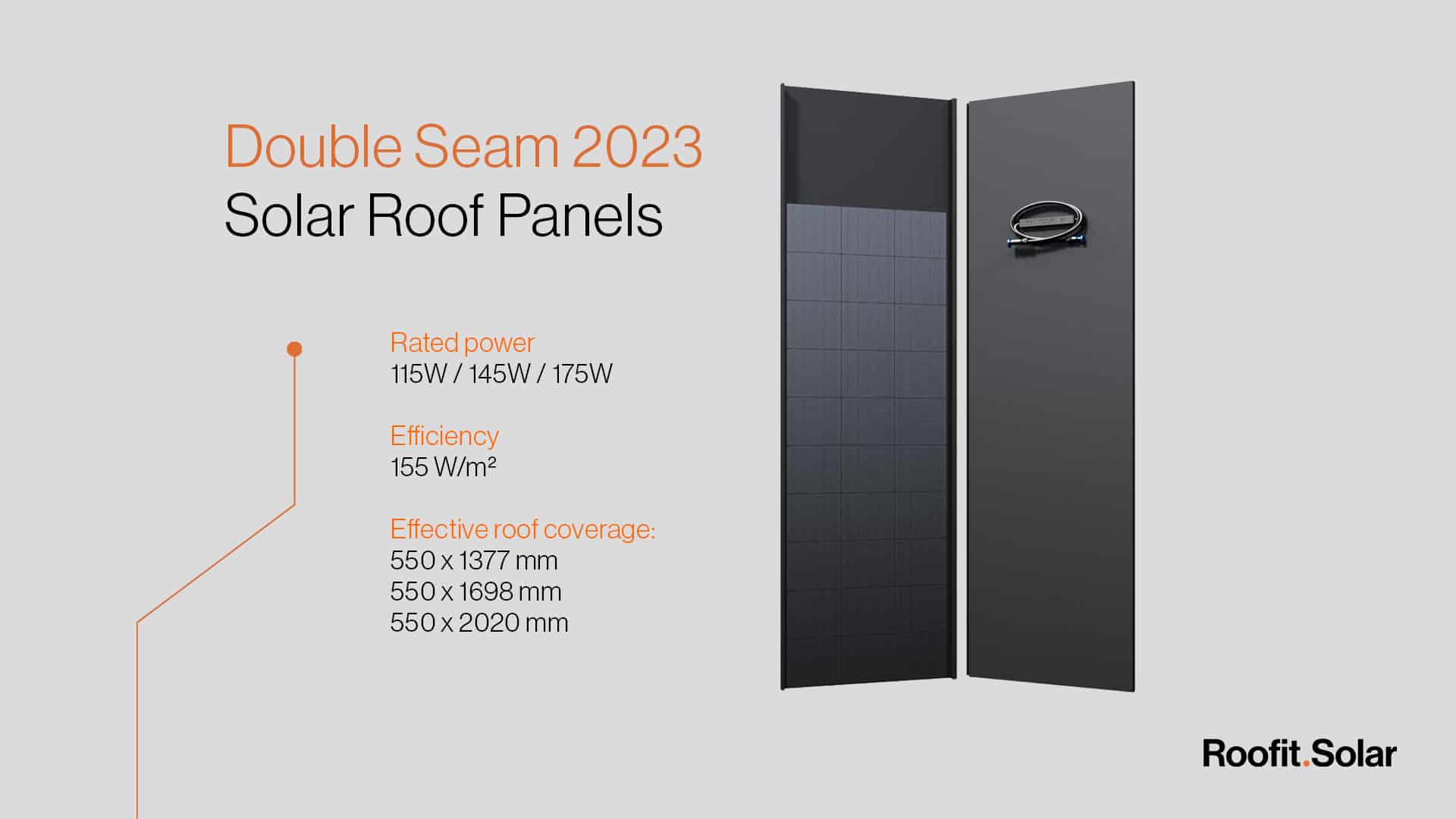
What makes Roofit.Solar’s solar metal roofs safe and durable?
Safety of you and your loved ones are our priority here.
Here are ten key things to know about our metal roofs with integrated PV and how they differ from traditional solar panels, and what makes them durable:
- Our metal roofs are lightweight.
- The metal itself is highly fire-resistant, and we only use inverters with Arc Fault Interrupters to ensure safety.
- Our solar metal roofs are durable and do not rot, rust, split, or crack thanks to the metal backsheet.
- We use a 0.5mm steel layer for added protection, compared to the 0.3mm plastic backsheet used in traditional panels.
- Our 0.5mm steel layer prevents diffusion of water vapor and oxygen, which can cause corrosion in traditional panels, resulting in slower aging of our products.
- Our solution is integrated into the roof structure, making it more robust compared to regular on-roof solar panels.
- Our smaller modules have more support points due to the roofing structure underneath, making them more mechanically stable.
- This increased stability also means that our modules are less prone to micro cracks, even in heavy snow conditions, resulting in no significant loss in productivity.
- Our solar roofs are tested against specific snow loads and have shown no significant losses, which we will discuss in more detail in the following sections.
- The life expectancy of our SSAB metal roofs is 50-100 years.
If you want to learn about what makes our products safe and durable, the safety tests we run at Roofit.Solar and more, take a look at here!

Why Go Solar with Roofit.Solar
In addition to considering the safety and durability of a solar roof, there are other factors to take into account when choosing a solar company. At Roofit.Solar, we take pride in designing a safe and visually appealing product, but that’s not all we have to offer.
In this section, we will explore why choosing Roofit.Solar as your solar provider is the best decision. The list of reasons is endless, so let’s dive into some of the most significant benefits that you can enjoy when you go solar with us.
- A smart, integrated solution: Our solar roofs are designed to integrate seamlessly into your existing roof structure, providing an aesthetically pleasing and highly efficient solution.
- Safe and durable products: Our solar roofs are engineered to withstand extreme weather conditions, ensuring that they last for many years with minimal maintenance required.
- A unique combination of design and technology: The Roofit.Solar solar roofs are not only highly functional but also visually appealing, providing a unique combination of design and technology.
- Guidance and support from a team of experts: Our experienced team is here to help you every step of the way, providing guidance and support throughout the entire process.
- Full-service installation: We provide full-service installation, taking care of everything from initial design to final installation and commissioning. Learn more about the installation process here!
- Integrated solar roofs with a payback opportunity: Our solar roofs are designed to provide not only energy savings but also a payback opportunity, making them a smart long-term investment.
- A 10-year warranty: We offer a 10-year warranty on all our products, providing you with peace of mind and protection for your investment.
- Last but not least, the chance to reduce both your energy bills and your carbon footprint: By choosing Roofit.Solar, you have the opportunity to reduce your energy bills and your carbon footprint, contributing to a more sustainable future for us all.
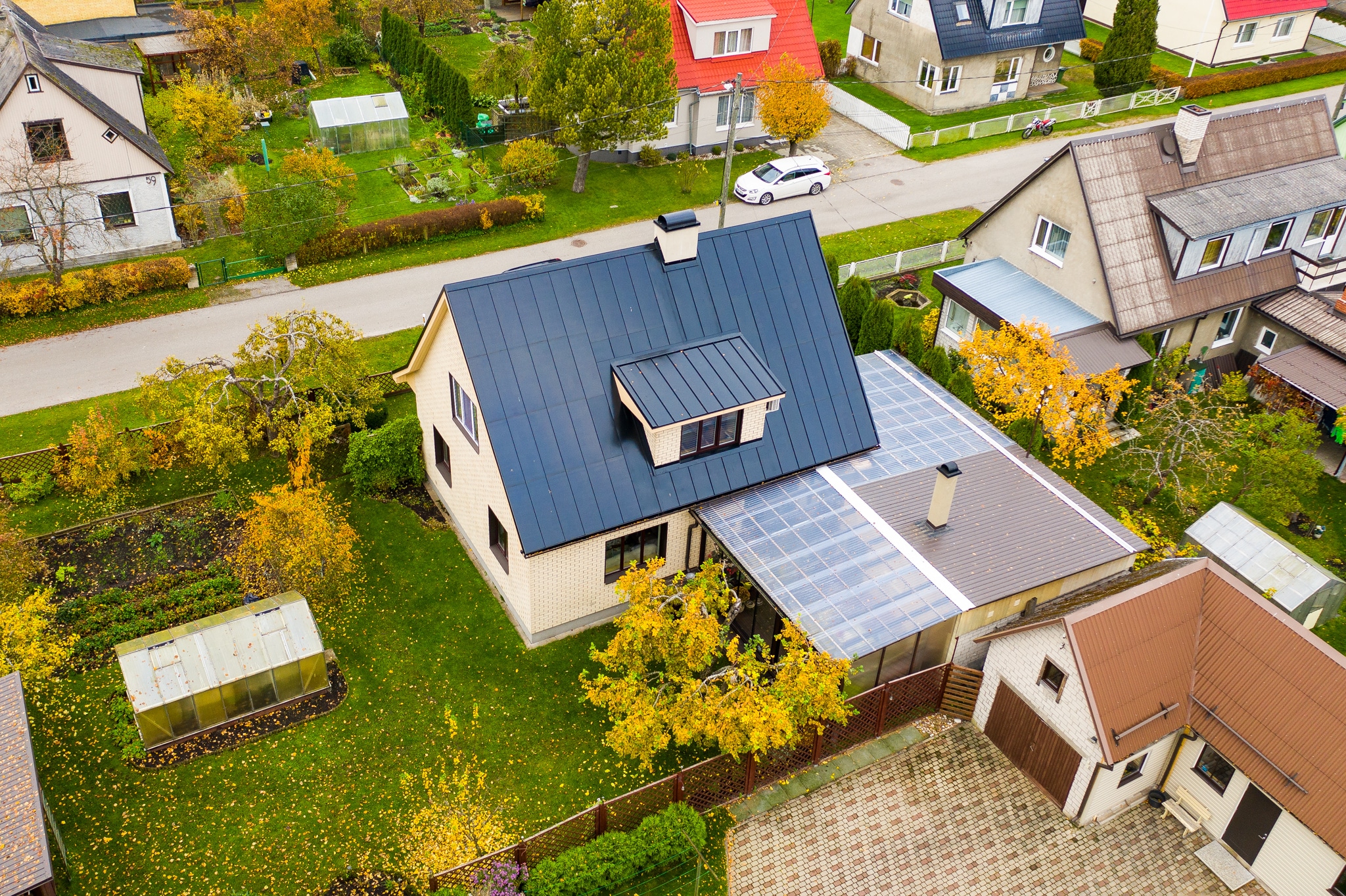
Roofit.Solar is committed to being with you every step of the way on your solar journey, from initial assessment to installation and beyond. If you want to learn more about why choosing us as your solar provider is the right decision, we recommend reading our article “8 Reasons to Go Solar with Roofit.Solar.”
Want to see more of our projects? Take a look at our Reference page!
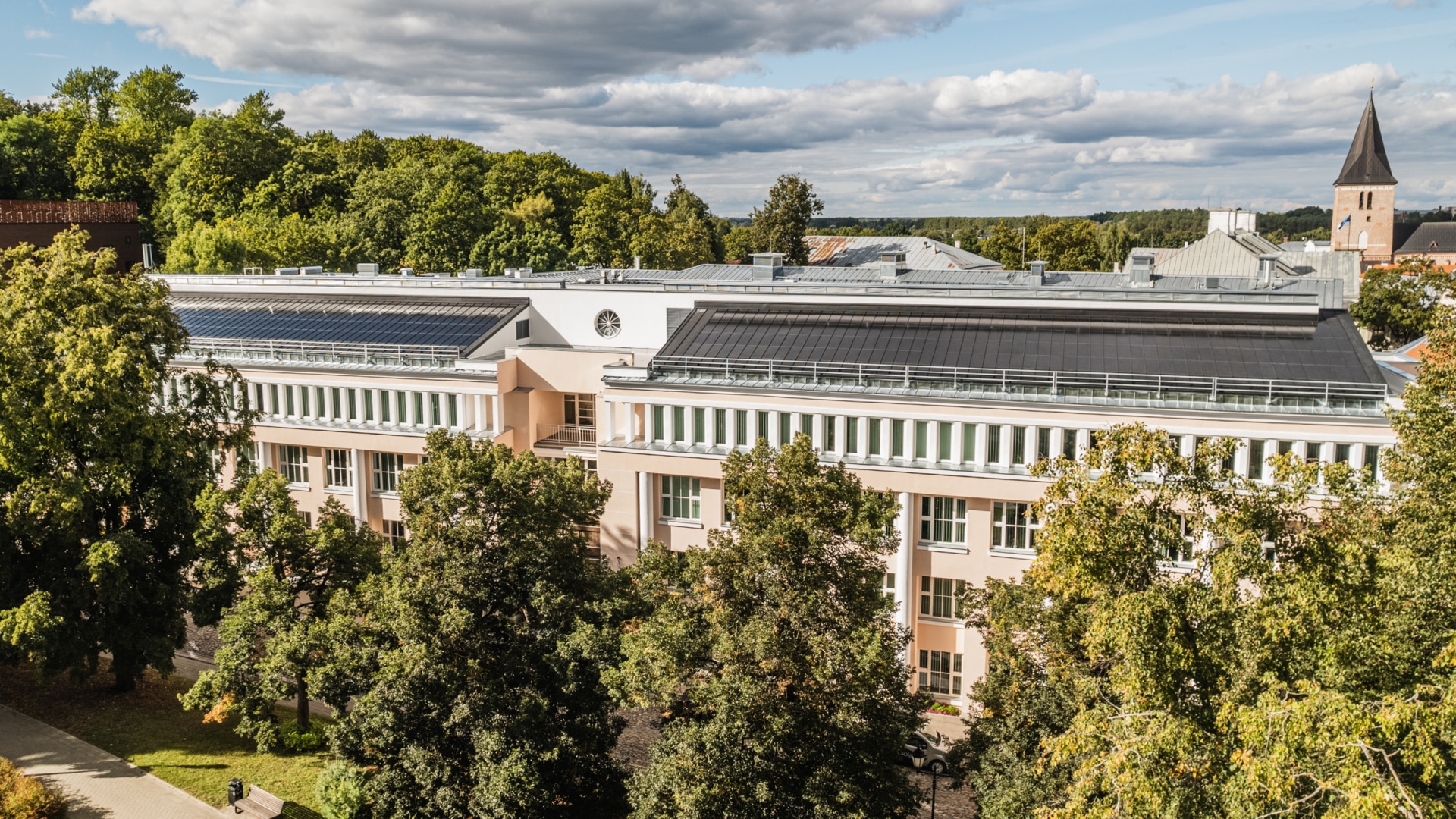
Start your solar journey with Roofit.Solar
Solar energy is the way of the future and Roofit.Solar offers the perfect solution with our solar roofs!
Our roofs are not just aesthetically pleasing but also strong and resilient, capable of withstanding extreme weather conditions. Additionally, they are safe and durable, with high performance even in geographies with low-light. Our 2-in-1 solution provides a rooftop that not only looks good but also generates solar energy.
At Roofit.Solar, we prioritise safety and provide premium-quality products backed by smart design and high technology. Plus, we offer an easy 3-step process and are always ready to assist you:
- Fill in the form
- Confirm request
- Get tailor-made offer and make a step towards a safer and a more sustainable future
Don’t hesitate to get in touch with us and join the solar energy revolution!
